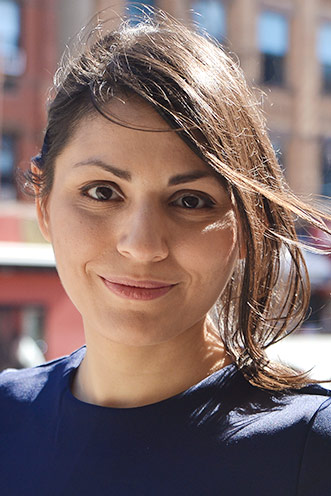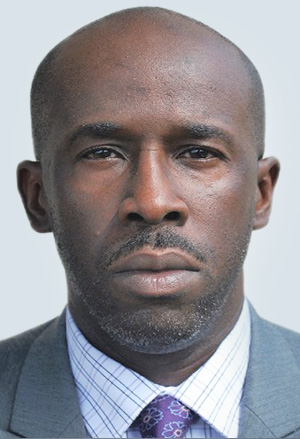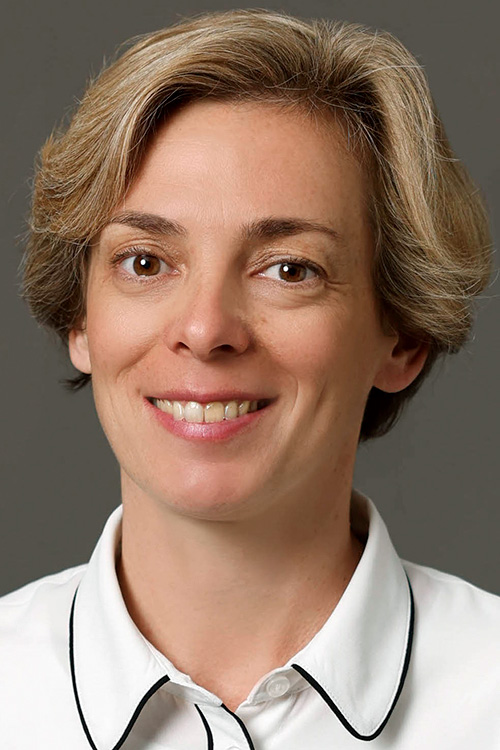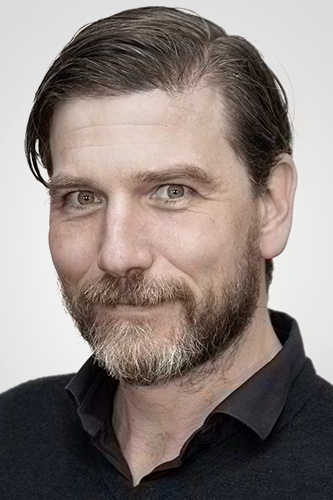/ Featured Blogs
The EU AI Act: A Critical Assessment
 The proposed new European Union (EU) Artificial Intelligence Act has been extolled in the media as a bold action by a major legislative body against the perceived dangers of emerging new computer technology. The action presently consists of an initial proposal for a Regulation with annexes from 2021, plus recent Amendments adopted on 14 June. This regulatory behemoth exists entwined among a multitude of other recent EU major regulations...
The proposed new European Union (EU) Artificial Intelligence Act has been extolled in the media as a bold action by a major legislative body against the perceived dangers of emerging new computer technology. The action presently consists of an initial proposal for a Regulation with annexes from 2021, plus recent Amendments adopted on 14 June. This regulatory behemoth exists entwined among a multitude of other recent EU major regulations...
- By Anthony Rutkowski
- Comments: 1
- Views: 16,211
Internet Multistakeholder Model: A Trade Association With Multistakeholder Theater
 Did you know that we are swimming in Domain Name System abuse? As an Internet user, you probably were not aware. Apparently, doomsday is near, and the Internet is going to explode in our face if we do not do something about "domain name system abuse." This doomsday narrative has nearly jeopardized multistakeholder governance. However, it may also compel us to reconsider the multistakeholder model and its relevance in governing the Internet and its associated technologies.
Did you know that we are swimming in Domain Name System abuse? As an Internet user, you probably were not aware. Apparently, doomsday is near, and the Internet is going to explode in our face if we do not do something about "domain name system abuse." This doomsday narrative has nearly jeopardized multistakeholder governance. However, it may also compel us to reconsider the multistakeholder model and its relevance in governing the Internet and its associated technologies.
- By Farzaneh Badii
- Comments: 0
- Views: 15,944
Happy 50th Birthday Ethernet
 ome 50 years ago, at the Palo Alto Research Centre of that renowned photocopier company Xerox, a revolutionary approach to local digital networks was born. On the 22nd of May 1973, Bob Metcalf authored a memo that described "X-Wire," a 3Mbps common bus office network system developed at Xerox's Palo Alto Research Center (PARC).
ome 50 years ago, at the Palo Alto Research Centre of that renowned photocopier company Xerox, a revolutionary approach to local digital networks was born. On the 22nd of May 1973, Bob Metcalf authored a memo that described "X-Wire," a 3Mbps common bus office network system developed at Xerox's Palo Alto Research Center (PARC).
- By Geoff Huston
- Comments: 0
- Views: 8,843
EU “Fair Share” Contagion: Caribbean Telecoms Operators Seek to Deepen Their Monopoly Strangleholds
 On Friday, 23rd June, Caribbean telecommunications operators (telcos) held a meeting in Miami to fine tune their strategy to force Big Tech companies to contribute financially to regional telecoms network infrastructure. Hosted by the Caribbean Telecommunications Union (CTU), and taking a similar perspective to the "fair share" proposal currently being debated in the European Union, regional network operators are arguing that over-the-top (OTT) service providers are responsible for 67 percent of the total Internet traffic in the Caribbean, but make no contributions or investments toward local delivery networks.
On Friday, 23rd June, Caribbean telecommunications operators (telcos) held a meeting in Miami to fine tune their strategy to force Big Tech companies to contribute financially to regional telecoms network infrastructure. Hosted by the Caribbean Telecommunications Union (CTU), and taking a similar perspective to the "fair share" proposal currently being debated in the European Union, regional network operators are arguing that over-the-top (OTT) service providers are responsible for 67 percent of the total Internet traffic in the Caribbean, but make no contributions or investments toward local delivery networks.
- By Niel Harper
- Comments: 0
- Views: 10,462
How to Design a Decentralized Social Media Protocol – Be Ruthless About Technical Requirements and Eager to Build Coalition
 Project Liberty's Institute sat down with Dave Clark, an early contributor to the TCP/IP protocols that built and run the Internet, and one of the expert advisors on DSNP, the Decentralized Social Networking Protocol. Dave Clark is Senior Research Scientist at MIT's Computer Science and Artificial Intelligence Laboratory (CSAIL) and Fellow of the National Academy of Engineering and the American Academy of Arts and Sciences.
Project Liberty's Institute sat down with Dave Clark, an early contributor to the TCP/IP protocols that built and run the Internet, and one of the expert advisors on DSNP, the Decentralized Social Networking Protocol. Dave Clark is Senior Research Scientist at MIT's Computer Science and Artificial Intelligence Laboratory (CSAIL) and Fellow of the National Academy of Engineering and the American Academy of Arts and Sciences.
- By Constance Bommelaer de Leusse
- Comments: 0
- Views: 7,722
.AI You Ready? A Domain to Add to Your Portfolio… Before Someone Else Does
 On the sunny beaches of Anguilla -- a small island of just 35 square miles -- I'm sure artificial intelligence (AI) is the last thing people are thinking about. The primary industries of Anguilla, set in the Leeward islands in the Caribbean, are tourism and offshore banking. However, this nation has been assigned the country code top-level domain (ccTLD) .AI -- which is being repurposed to represent artificial intelligence.
On the sunny beaches of Anguilla -- a small island of just 35 square miles -- I'm sure artificial intelligence (AI) is the last thing people are thinking about. The primary industries of Anguilla, set in the Leeward islands in the Caribbean, are tourism and offshore banking. However, this nation has been assigned the country code top-level domain (ccTLD) .AI -- which is being repurposed to represent artificial intelligence.
- By Justin Hartland
- Comments: 1
- Views: 11,510
EU Standards Must Be Freely Available
 In 2019, two organisations - Public.Resource.org of Sebastopol, California, and the Right to Know GLC of Dublin - brought suit against the European Commission for violating the fundamental rights of citizens to access the standards they are required by law to know, and attempting to protect intellectual property by copyright which lacked originality because it was, inter alia, provided by public governmental and industry sources.
In 2019, two organisations - Public.Resource.org of Sebastopol, California, and the Right to Know GLC of Dublin - brought suit against the European Commission for violating the fundamental rights of citizens to access the standards they are required by law to know, and attempting to protect intellectual property by copyright which lacked originality because it was, inter alia, provided by public governmental and industry sources.
- By Anthony Rutkowski
- Comments: 0
- Views: 5,631
Will Electronically Steered Antennas Replace Parabolic Antennas in Satellite Ground Stations? (ChatGPT-Assisted Version)
 In a previous post, I asked whether electronically steered antennas (ESAs) would replace parabolic antennas in satellite ground stations. I read a few articles suggested by others and by Google search, used some common sense, produced a list of advantages of ESAs, and concluded that it was likely they would eventually replace parabolic antennas for many applications.
In a previous post, I asked whether electronically steered antennas (ESAs) would replace parabolic antennas in satellite ground stations. I read a few articles suggested by others and by Google search, used some common sense, produced a list of advantages of ESAs, and concluded that it was likely they would eventually replace parabolic antennas for many applications.
- By Larry Press
- Comments: 0
- Views: 3,850
The Benefits of Thinner Fiber
 Fiber manufacturers are always trying to make it easier to deploy fiber. One of the most interesting trends is the increasing migration from 250-micron fiber to 200-micron fiber. For those not familiar with the metric system, a micron is one-thousands of a millimeter. A 250-micron fiber has a diameter of 0.25 millimeters, while a 200-micron fiber has a diameter of 0.2 millimeters.
Fiber manufacturers are always trying to make it easier to deploy fiber. One of the most interesting trends is the increasing migration from 250-micron fiber to 200-micron fiber. For those not familiar with the metric system, a micron is one-thousands of a millimeter. A 250-micron fiber has a diameter of 0.25 millimeters, while a 200-micron fiber has a diameter of 0.2 millimeters.
- By Doug Dawson
- Comments: 0
- Views: 3,355
Human Rights and the Digital Domain Primer - Part 2
 The digital domain encompasses the different spaces and spheres we use to relate and interact with the people and things that surround us using digital technologies. The Universal Declaration of Human Rights, UDHR, as the globally accepted standard, should serve us as the guiding light when it comes to striking the delicate balance between our rights and responsibilities on and offline.
The digital domain encompasses the different spaces and spheres we use to relate and interact with the people and things that surround us using digital technologies. The Universal Declaration of Human Rights, UDHR, as the globally accepted standard, should serve us as the guiding light when it comes to striking the delicate balance between our rights and responsibilities on and offline.
- By Klaus Stoll
- Comments: 0
- Views: 4,041